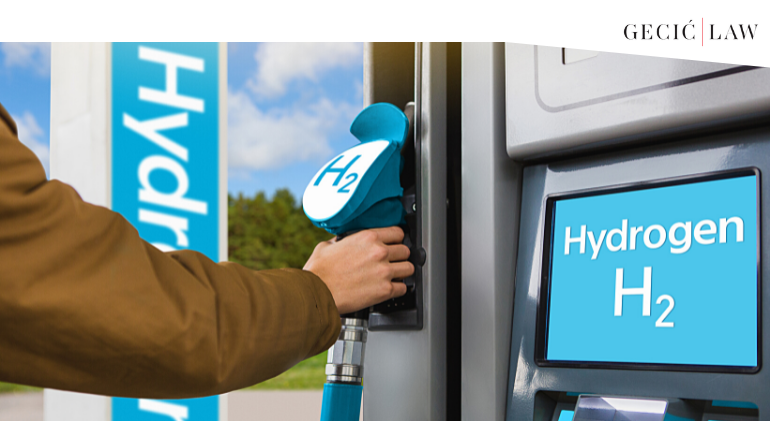

It is almost impossible to remain unfazed by the increasing detriments of global warming. To make matters worse – the worst is yet to come, and we can only mitigate the unavoidable consequences. To this end, the European Union (“EU”) has sought to develop a strategy for combating climate change and global warming. The children of this effort are several significant legal acts. As part of the “Fit for 55” initiative, the EU wants to reduce net greenhouse emissions by 55% by 2030. So, here’s where we get to the hydrogen economy.
The global economy is currently based on hydrocarbons such as crude oil, coal, natural gas. That means the world is functioning as a hydrocarbon economy. Without hydrocarbons, almost all economic activity would stop. Anarchy would ensue due to energy deficiency. However, the hydrogen economy is emerging as one of the alternatives.
The term hydrogen economy refers to a future economy that mostly relies on hydrogen fuels. These fuels are smaller polluters than hydrocarbon fuels. Although the exact levels of pollution vary depending on the method of hydrogen production (some also depend on gas or oil), hydrogen-generated energy is significantly cleaner than carbon alternatives as it leaves no detrimental residue in the atmosphere. For example, hydrogen vehicles have been on the market for quite some time. However, scientists are still working on developing new ways to replace fossil fuels with hydrogen in various industry sectors.
The EU is trying to catch up with these changes. Many years ago, it created the Hydrogen and Fuel Cell Technology Platform and recognized that fuel cells and hydrogen can help enhance energy security and mitigate climate change. However, the EU now wants to provide a regulatory framework to create a less polluted Europe.
Therefore, it recently proposed a number of legislative breakthroughs.
As a part of its promise of “Delivering on the European Green Deal”, the European Commission revised the Renewable Energy Directive. A significant part of this revision includes provisions related to hydrogen. The proposed revision sets new targets for hydrogen refueling infrastructure for road vehicles in EU Member States. At least one publicly accessible hydrogen refueling station is to be deployed in each urban node by the end of 2030. Also, Member States shall ensure that publicly accessible hydrogen refueling stations are at specially determined distances. The document also includes new provisions on payment methods and price-related issues.
This proposal defines hydrogen as an “alternative fuel”. It also regulates hydrogen transport infrastructure and technical requirements of the refueling points.
To mitigate the consequences of excessive CO2 emissions, the EU proposed this regulation. The goal is to significantly reduce CO2 coming from vehicles. The proposal envisages a substantial increase in alternative fuel usage. The new CO2 emissions standards should provide consumers with incentives to switch to renewable fuels, including hydrogen.
Since becoming an EU candidate, Serbia has been keeping up with EU energy law. Hence, Serbia adopted a series of energy acts, which aim to initiate its energy transition. Additionally, the Ministry of Mining and Energy started drafting a National Energy and Climate Plan for 2021-2030. The document will, inter alia, set measures and policies to increase the share of renewables in Serbia’s overall energy consumption.
In the future, we expect Serbia to pay more attention to renewable energy sources, including hydrogen.
Can the world move completely away from fossil fuels? Right now, we cannot know with certainty, but the ongoing legislative changes ought to have at least some positive effect on the environment.
Authors: Nikola Vjetrović, Jelena Škorić